OPENING OF THE EXHIBITION
TRANSPARENT RELATIONSHIP
TRIUMPH gallery
Moscow
14.06 - 26.06.2013
Moscow
14.06 - 26.06.2013
A metaphor becomes a linguistic norm when it is forgotten. Vladimir Potapov turned the metaphor of transparent painting into an investigative approach. Long ago, he began attempting to rehabilitate painting — for him, it means to understand. To this end he dissects its body. But we can look at this in a different way: he brings together an illusory space opened up by the Renaissance and cast down by Modernism in an active experiment in synthetic perception. The path to innocence doesn't lead backwards, it leads to a major guilt. According to the theory propounded by the sociologist Luhmann, demonized by leftist criticism, the fractured sections of the whole fill out their totality in the next level. With the young painter Vladimir Potapov, painting loses its identity with the "canvas, oil" technique, and moves towards another wholeness. But how can we understand oil without canvas, or painting without its opaque foundation, or painterly technique beyond the confines of its medium? What is it that we actually see in his project "Transparent Relations"? Painting? Yes. But not a picture. A multi-layered, transparent carrier or medium frees painting of its framing, of its canvas, of a prescribed way of seeing — in other words, it is freed of the picture. The frame limits our conception, informs us of the borders of a conditionality, it asserts a convention of visual language and it fosters the viewer within its traditions. The role of the canvas is similarly conventional — painting is reposed upon its opacity. Because of it, the picture does not possess its own light and is forced to construct its own internal light regime and shadows. The simulated light space is created on a dense plane from one immobile point, and doesn't change its geometry to match the position from which the spectator is viewing the canvas. The illusionism of a traditional picture puts us in the picture of an immobile Cyclops. Thanks to film, reality and the view of it stopped being static before Cubism overcame the illusion of space dictated by the picture and the static observer. Vladimir Potapov links the issues of the limitations of painting not only with movement, but also with the experience of the body. In order to be conscious of oneself and one's view of the world in motion, one must correlate the motility and perceptive functions of the body with the viewer's impressions. In such an experiment in synthesis, the geometric illusion returns not as an aesthetic evil overthrown by Modernism, but as the situation of the overthrow of art. In his project, people manipulate with something on the ground. This is one of the formal motifs in the series, though it is not overly important. A sapper, a golfer, a housemaid, a street cleaner, their tools are a metal detector, a club, a vacuum cleaner, a dustpan and brush. The characters have a common plasticity — it is the plasticity of internal isolation from the external gaze. It, perhaps, victimizes the characters with regard to us, but the intention is that we are given the opportunity to intently examine them, and this is enough. This is not as simple as it seems — you have to move, otherwise it will all be to no end. In movement, we bring together that which remains from the traditional picture — a painterly illusion, the result of the immobile Cyclops vision.
The project's second refrain is the blot or patch. It appears to be a dot pattern that appears in art together with the translucency and indicates the nature of the document, the constructed nature of reality and the problematics that this entails. With Potapov, the blot or patch isn't a dot pattern, it is a filter. A dot pattern indicates the altered nature of reality, its transparency; a filter, on the other hand, creates an obstruction and a shape, it concentrates opacity, the shape, to a certain extent, speaks for itself. It doesn't matter that reality is artificial — painting has to be understood as if we don't know about this. We have to have in mind opacity, when talking about transparency. Glass, air, water, the retina are not ideal. The illusion became more convincing when Leonardo discovered that opacity builds up in a layer of the air that hitherto had been ideally transparent and invisible. We can only discover transparency through its defect. The motion that Potapov enforces upon the viewer allows us to recognize painting as a defect in transparency. In this quality, it opens up reality to us a defect in illusion. What intrigues here is the tenacity of Potapov's questioning with regard to the foundations of art. He has made a series of film-interviews on painting with various critics and artists; I was also among them, and from the very beginning I saw his work as being a contemporary research project. This is, in fact, work in the artistic field that is very much in fashion — research, the production of knowledge. In the film he has concentrated differing opinions on the problematics of painting, a concentration that can't even be found where academic painting is taught. He hears out the experts, but never ceases to doubt — they talk about… well, it doesn't actually matter what they say, it is what they remain silent about that is important. Silence, as we know, implies agreement — an agreement to perceive and understand things in a certain way. This is not a "conspiracy of the initiated", as Baudrillard would have it, it is simply a question of why one should talk of something if it's already clear? In any doctrine that creates foundations for a certain practice, whether medical, artistic or religious, there is a general conception of what resists literalness. Medical norms, the death of art, the afterlife, are not discussed in a modulation of definition. It is on this unspoken convention that the discourse of art is founded. Potapov's interest in the historical life of painting with it cyclical nature of death and resurrection has been prolonged and tenacious — he has also brought together young painters and tried to understand why painting is dead, but they aren't. He has staged several painting exhibitions, at Winzavod and Fabrika, and they went on to tour the cultural capitals. He has consistently moved towards his layered, coloured transparency. Striving to find answers to questions about painting, studying the outer limits of its history and language, he has passed through pure practice and reached the universal structures of art, where works find forms and mediums depending on the paradigm within which they define themselves.
Eng
WORKS
DUEL
100x120 cm, plexiglass, oil, 2012
100x120 cm, plexiglass, oil, 2012
SHOT
100x100 cm, plexiglass, oil, 2012
100x100 cm, plexiglass, oil, 2012
DIVA
100x100 cm, plexiglass, oil, 2012
100x100 cm, plexiglass, oil, 2012
CUBA
100x100 cm, plexiglass, oil, 2012
100x100 cm, plexiglass, oil, 2012
Beuys TV
100x100 cm, plexiglass, oil, 2012
100x100 cm, plexiglass, oil, 2012
YARD
70x100 cm, plexiglass, oil, 2012
70x100 cm, plexiglass, oil, 2012
TIHOOOOOOO
100x100 cm, plexiglass, oil, 2012
100x100 cm, plexiglass, oil, 2012
THE RED CARPET
100x100 cm, plexiglass, oil, 2012
100x100 cm, plexiglass, oil, 2012
CUBA 2
100x100 cm, plexiglass, oil, 2012
100x100 cm, plexiglass, oil, 2012
PLAN
100x100 cm, plexiglass, oil, 2012
100x100 cm, plexiglass, oil, 2012
BEACH
100x100 cm, plexiglass, oil, 2012
100x100 cm, plexiglass, oil, 2012
RUSSIAN LANDSCAPE
100x100 cm, plexiglass, oil, 2012
100x100 cm, plexiglass, oil, 2012
FASCIST FLEW
100x100 cm, plexiglass, oil, 2012
100x100 cm, plexiglass, oil, 2012
OPPOSITION
70x70 cm, plexiglass, oil, 2012
70x70 cm, plexiglass, oil, 2012
HEAVENLY LIMIT
100x100 cm, plexiglass, oil, 2012
100x100 cm, plexiglass, oil, 2012

